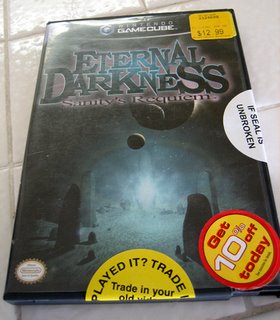Decided to throw up a series discussing fighting games. I figured I would pick the 5 most successful, accessible and complex fighting games of all time. Today will be the most successful.
Seeing as how we are talking about the most successful fighting games, I'm curious if anyone has some great stories about things that they did as a kid to play them. I had a friend who would go through the mall parking lot pulling up on car handles looking for cars that were unlocked and seeing if there was any change to steal just to play Street Fighter. I remember trading copies of games (old sierra games) with the local guy who worked at my arcade for all of the foreign tokens (tokens that were for a different arcade that people tried to use in that arcade).
5 most successful fighting games of all time: A. Street Fighter 2: World Warrior. Often heralded as the 2nd Pac-Man, Capcom quietly released a bomb into the arcades in early 1991 that rescued arcades and revolutionized the world. Names such as Chun Li and Blanka are now household names that everyone is familiar with. Capcom succeeded where others had failed for three reasons. One is that for the first time teenage males had something to compete with besides just score or time, they had one another. Second is that for the first time someone came up with a way to read in complex joystick motions correctly. Attacks went from just being a button or a direction and a button to now Down, Down/Toward, Toward+Punch (known through out the world as the fireball motion). People were given a new skill to attain and everyone across the world wanted to be the first ones to master these new skills and use them to win. Third, whether by design or by chance, Street Fighter succeeded because there was never one strategy that dominated the game. As soon as you thought you had found the perfect strategy to win with your character, there was someone there to prove you wrong.
B. Mortal Kombat 2: In the harsh weather known as Chicago, 2 guys were busy trying to get in on the craze that were fighting games. After having decent success with Mortal Kombat 1 - nothing more than an experiment with gore and real actors for their graphics, Midway did the unthinkable and actually injected some game play into MK2. Characters had actual strategies to employ and tier rankings were formed. The success of MK1 was largely in part due to the 'sekrets' that the game had (fatalaties, hidden character) and Midway created with MK2 with this in mind. Even going as far as releasing upgrades that changed the commands of not only some moves but also all of the fatalaties that were in the game. It was not uncommon to see players in the arcades with towels or even boxes over their hands to hide their inputs from fellow players. Midway seemed to be in tune exactly with what the players wanted at this time and delivered in full force.
C. Tekken 3. After having lived as nothing more than a shadow of Virtua Fighter, Tekken grew wings and sprouted into a franchise that no one could touch when Tekken 3 was released. People were tired of playing Street Fighter rehashes and Mortal Kombat became too silly, when along came Sony touting how 2D was dead and 3D was the future, and in walked Tekken 3 to prove that the future was here. Building upon precepts that people were familiar with, Tekken 3 learned from its mistakes and nailed the magic that is making a game that looks easy to play and provides years of depth. Having a story line that affected the characters throughout the series, having chars that were time released, having home releases that were often better than their arcade counter parts all added up for Tekken dominating the console sales figures for years to come.
D. Killer Instinct 1. After seeing that Midway could put a dent into the armor of Capcom's Street Fighter, Nintendo and Rare teamed up to carve out their slice of the fighting game pie. Once again, building upon the concepts that everyone were familiar with (6 buttons, 1 joystick), Killer Instinct came out brawling and succeeded. Boasting high resolution 3d models that were using the Ultra 64 hardware, (along with advertisements of how it was coming home to the Ultra 64 hardware) Rare knocked a home run with it's easy to perform combos and ease of play. Prior to KI, 4 hit combos were seen as the echelon of combos where as KI introduced a complex system that resulted in the player being able to use different subsets to create 40+ hits. Also since Rare were a UK company, they used what was then a burgeoning soundtrack of electronic dance music and introduced many Americans their first taste of quality techno music.
E. Marvel Vs. Capcom 2. Fighting game companies having alienated most fighting game fans by sequels that no one could understand the differences or were too complex that required people to read 100 page manuals written in Japanese, Capcom released a gigaton bomb on the fighting game community with Marvel Vs. Capcom 2. This was a new Street Fighter for a new generation - people were no longer settling for one on one and Capcom answered with the first real team based game that consisted of 3 players per team and could have potentially all 6 characters on the screen at once. By using a cast of 56 characters, mostly from previous titles - anyone who had ever come into contact with a Marvel comics book or a Street Fighter game prior would recognize half of the cast. Capcom once again pulled out their magic and created a game that is easy to get into and at the same time leaves enough room for talent and skill to be blossom. Released in 2000, this game has celebrated more tournaments and bigger tournaments than any other fighting game in the history of the US.
Honorable Mention:
Street Fighter 2: Hyper Fighting. Capcom knew they had a goldmine with Street Fighter 2 and wanted to cater to their fans. America at this time was the bulk of their audience, being more competitive by nature than Japan. With that in mind, they also wanted to provide an upgrade to counter the bootleg versions of Street Fighter 2 that were floating around. So Capcom of USA brought in 2 of their employees and asked them to fine tune what was already there. Possessing not one single frame of new animation, they took what they had and produced arguably the best version of Street Fighter 2 to date. Fans quickly flocked to the tweaks in droves and once again reminded everyone in the world why Capcom was #1 at this point.



